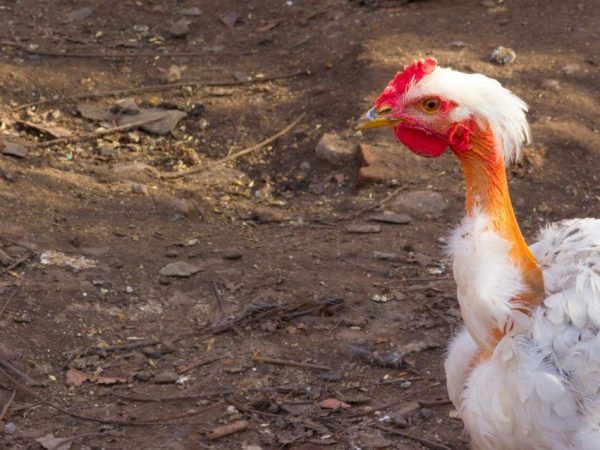Naked chickens
Chickens are bred for meat and eggs almost all over the world. During the selection, a huge number of breeds were bred, each of which differs from others in unique features inherent only in it. The bare-necked breed of chickens (naked neck) is one of the most popular, and there are good reasons for this. A short but succinct description of the breed will show breeders why they need to choose a neck for their farm.

Hairless breed of chickens
Appearance and pedigree
As you know, they are greeted by their clothes - they are escorted by their minds. Wise words also apply to the choice of the Hairless breed of chickens.
Usually, the description should start with an origin story, but there is nothing to say: the origin of the voices is shrouded in mystery. More or less reliably, it is only known that the bird came to Russia from Romania and Hungary and that before it was called Transylvanian. The hypothesis that she was bred in the homeland of Count Dracula is widespread among poultry houses. However, other countries, including Spain, claim the homeland of the breed.
You don't even need to look at the photo, it is enough to carefully read the name of the breed - Bare-necked chickens - in order to understand their most important external difference. Bare necks give the birds an original look. The reason is the absence of feather follicles: it is from them that feathers grow. The feature is inherent in the genes and is inherited. The skin of the neck is red, over time it coarsens and takes on a more intense color.
Neoprene is also present on other parts of the bird's body, including under the wings and in the lower body. The more such non-feathered areas, the more thoroughbred the chick is considered. Holoshey chickens have other interesting features:
- the head is medium in size, the crest is red;
- beak slightly curved, yellow;
- the neck is without feathers to the base, on the front of it there may be a "bow", but not necessarily;
- rounded, well-developed breast and large belly;
- wings hanging down to the ground and not adjacent to the body;
- very different color of plumage: black, white, red.
There are different forms of the breed: silk, brama and others. All varieties are good: black broiler birds are as good as colored ones.
Disadvantages that can lead to disqualification of the bird: black eyes and "face", black spots, feathers or yellow skin on the apterial areas, weak body. All this indicates either degeneration or insufficient pedigree breeding of naked chickens.
Productivity and other features
Most farmers still raise chickens not for fashion shows, but for delicious tender meat and eggs. In this regard, the holosheyka pleases the owners and those who are lucky enough to taste it: its meat is very tasty, delicious, reminiscent of a turkey. One simple fact will help to prove the high taste of the bird: it was served on the tsar's table, and you cannot put anything on the plate for the rulers.
The characteristic of productivity is as follows:
- The rooster weighs on average up to 3-4 kg, the female is slightly smaller.
- Laying hens begin to lay eggs from 6 months.
- In productivity, the naked chicken is inferior to some other breeds... She produces an average of 160 eggs, but some specimens produce 200 eggs per year.
- Each egg weighs about 60 g.
- Survival is the highest: 95% of chicks hatch from eggs.
Holosheets care
Needless to say how important bird care is? Without it, the Hairless Bird is capable of get sick, wither away or refuse to rush. Feathered are unpretentious, so cultivation does not include any original rules. In the video, you can see with your own eyes how to care for pets.
Here are some of the rules of care:
- The content depends on the climate in the first place. In warm southern countries, birds live well under a simple canopy. Keeping in cold northern regions requires construction insulated chicken coop, the average temperature in which is from 12 to 15 ° С.
- The contents should also include a walking area where the Hairless Hen can stretch its legs.
- Pets eat almost everything, but it is advisable to feed them balanced food.
- Despite the lack of plumage, the Bare-necked hen easily survives frosts, but it is still recommended to monitor the temperature in the chicken coop and for drafts.
The reviews from the poultry houses are mostly positive. The chickens grow well, they survive the winters well, despite the exotic look - it's a pleasure to work with them. Affordable price. The choice is wide.
Hybrid forms are popular, such as sasso xl or Sasso t 751 (black), whose homeland is France. The French broiler, however, is intended for growing in warm and even hot regions.
Chickens are the flowers of life
A rooster can fertilize no more than 10 females. Birds rush relatively well, but you need to monitor the light regime. Lighting is required for egg production, without it in winter the chicken will be reluctant to lay. The maternal instinct is pronounced, but incubation cultivation sometimes necessary. Eggs for incubation are selected clean and whole, without defects.
Artificial cultivation procedure
Day-old chicks are sensitive to low temperatures. During the first days, the temperature should be maintained up to 28 ° C, but every week it is required to lower it by 2-3 ° C, to 18 ° C. It is important to feed the winged ones regularly, and on days 4-5, introduce greens into the diet. Care for the young is the same as for the offspring of another chicken species.
Chickens with bare necks are not uncommon, as some farmers think, they are often bred, including on Russian farms.


